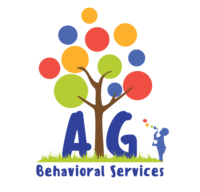




Signs & Symptoms of ASD

Autism Spectrum Disorder (ASD) is a neurodevelopmental condition that arises from brain differences. People with ASD may face challenges in social communication and interaction, exhibit repetitive behaviors or have focused interests, and show distinct learning, movement, or attention styles. However, not everyone with these symptoms has ASD. For those with ASD, these traits can significantly impact daily life.
Challenges in Social Communication and Interaction:
Individuals with ASD might struggle with social communication and interaction. This can manifest in various ways, such as:
- Lack of or inconsistent eye contact
- No response to their name by 9 months
- Absence of typical facial expressions (e.g., happiness or sadness) by 9 months
- Not engaging in interactive games like pat-a-cake by 12 months
- Limited use of gestures (e.g., not waving goodbye) by 12 months
- Not sharing interests (e.g., showing objects they like) by 15 months
- Not pointing to indicate interest by 18 months
- Not reacting to others’ emotions (e.g., distress) by 24 months
- Lack of engagement in play with peers by 36 months
- Not engaging in pretend play (e.g., role-playing) by 48 months
- Not performing activities like singing or dancing by 60 months
Restricted or Repetitive Behaviors and Interests:
People with ASD often exhibit specific behaviors or interests, distinguishing ASD from conditions solely involving social communication issues. These can include:
- Lining up objects and distress over changes in order
- Repeating words or phrases (echolalia)
- Consistent play patterns with toys
- Fascination with parts of objects (e.g., wheels)
- Distress over minor changes
- Intense, focused interests
- Need for routine adherence
- Repetitive movements (e.g., hand flapping, rocking)
- Unusual sensory responses (to sounds, smells, textures, etc.)
Additional Characteristics:
Many with ASD also show related traits, which may include:
- Delayed language, movement, or cognitive skills
- Hyperactivity, impulsivity, or inattention
- Epilepsy or seizure disorders
- Atypical eating or sleeping habits
- Gastrointestinal issues (e.g., constipation)
- Unusual emotional responses
- Anxiety, stress, or excessive worry
- Abnormal fear responses
It’s crucial to recognize that not all individuals with ASD will exhibit all these behaviors. Each person with ASD is unique, and their experiences vary.
What does the CDC say about Autism?
The CDC works 24/7 to protect America from health, safety and security threats, both foreign and in the U.S. Click the boxes below to learn what the CDC says about ASD.
Identifying Autism Spectrum Disorder (ASD) can be challenging as it lacks a definitive medical test, such as a blood test, for diagnosis. Instead, physicians assess the child’s developmental and behavioral patterns to determine the presence of ASD.
ASD can potentially be identified as early as 18 months. By the age of 2, a diagnosis made by a skilled professional is generally regarded as highly dependable. Yet, a definitive diagnosis often comes much later for many children. This postponement in diagnosis can result in a delay in receiving early intervention, which is crucial for children with ASD.
At present, there is no known cure for Autism Spectrum Disorder (ASD). However, studies indicate that early intervention treatments can significantly enhance a child’s developmental progress. These early intervention services are aimed at children from birth to 3 years of age (36 months), focusing on developing vital skills. They may encompass therapies to assist the child in developing speech, mobility, and social interaction capabilities. Consequently, if you suspect your child might have ASD or any developmental issues, it is crucial to consult with your child’s healthcare provider promptly.
Children who have not been formally diagnosed with ASD might still be eligible for early intervention treatments. Under the Individuals with Disabilities Education Act (IDEA), children younger than 3 years (36 months) who are potentially at risk of developmental delays can qualify for these services. These are available through an early intervention system in each state, where you can request an evaluation for your child.
Furthermore, specific symptom treatments, like speech therapy for language delays, often do not require a formal ASD diagnosis before beginning.
The full range of causes for Autism Spectrum Disorder (ASD) remains unknown, but it is believed to arise from multiple sources, leading to various types of ASD. A combination of factors, including environmental, biological, and genetic influences, may increase a child’s likelihood of developing ASD.
It is widely accepted among experts that genetics play a key role as a risk factor in the development of ASD. The risk is higher for children who have a sibling diagnosed with ASD. Additionally, individuals with specific genetic or chromosomal disorders, like fragile X syndrome or tuberous sclerosis, are more prone to developing ASD.
Certain medications prescribed during pregnancy, namely valproic acid and thalidomide, have been associated with a heightened risk of ASD. Research suggests that the critical window for the development of ASD is around the time before, during, and immediately after birth. Furthermore, children of older parents face an increased risk of ASD.
ASD remains a critical issue in public health. The Centers for Disease Control and Prevention (CDC), along with families impacted by ASD, are dedicated to uncovering the causes of this disorder. Gaining a deeper understanding of what predisposes an individual to ASD is crucial. To this end, the CDC is conducting one of the most extensive studies in the U.S., named the Study to Explore Early Development (SEED). This study investigates various potential risk factors for ASD, encompassing genetic, environmental, pregnancy-related, and behavioral factors.
ASD affects individuals across all racial, ethnic, and socioeconomic backgrounds. However, it is observed to be approximately four times more prevalent in boys than in girls.
For more than ten years, the CDC’s Autism and Developmental Disabilities Monitoring (ADDM) Network has been tracking the prevalence of ASD among children in the United States. This monitoring has provided substantial insights into the number of U.S. children affected by ASD. Continuously employing these tracking methods over time is vital to understand the evolving trends and learn more about the nature of the disorder.



